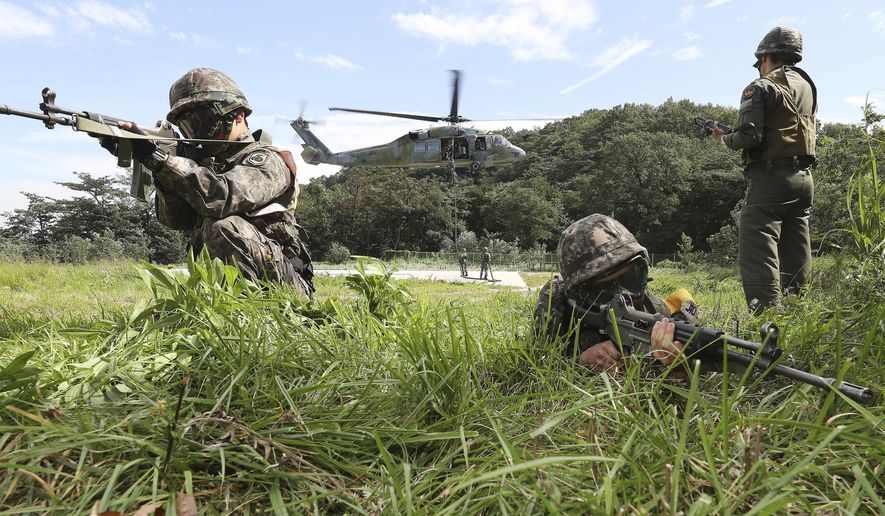South Korean fighter jets scrambled Tuesday in response to North Korea’s latest ballistic missile test with an aggressive live fire drill that authorities say showed Seoul’s ability to surgically destroy Pyongyang’s leadership if necessary.
Four South Korean F-15k fighters pounded a simulated target in the hills south of the Demilitarized Zone (DMZ) dividing the Korean peninsula with eight MK-84 bombs — roughly one-ton bombs used for destroying underground bunkers, according to reports.
The South Korean Air Forces said the bombs hit the target accurately and that the practice was aimed at sharpening the capability of completely destroying “the enemy’s leadership” in case of an emergency, according to the Yonhap News Agency in Seoul.
The development came hours after North Korea made international headlines and sent regional nerves on edge Monday night by test-launching what U.S. and Japanese officials described as a ballistic missile that penetrated Japanese airspace.
Tokyo said the missile flew over Japan’s northern-most Hokkaido island for two minutes before breaking into three segments and plunging into the Pacific Ocean about 730 miles east of the Japanese coastline, according to The Japan Times newspaper.
Japanese Prime Minister Shinzo Abe called the launch “an unprecedented, grave and serious threat.”
U.S. analysts called it a brazen provocation just weeks after the U.N. Security Council unanimously imposed its harshest economic sanctions to date against Pyongyang — a move aimed at deterring the North Korea from pursuing a nuclear-tipped intercontinental ballistic missile.
President Trump said Tuesday that “all options are on the table” in dealing with North Korea following the launch, which also came just weeks after Mr. Trump leveled some of the most threatening rhetoric in more than a decade at Pyongyang.
Following reports in early August that Pyongyang has succeeded in making a nuclear weapon small enough to fit inside one of its ballistic missiles, Mr. Trump threatened to rain “fire and fury like the world has never seen” on North Korea. However, he subsequently tempered the threat, suggesting that Washington remains open to and hopeful about possible dialogue with Pyongyang.
The South Korean drill Tuesday, meanwhile, was designed to show Seoul’s ability for rapid response to any future actions by the North.
“Our Air Force will wipe out the leadership of the North Korean regime with the strong strike capability if it threatens the security of our people and the South Korea-U.S. alliance with nuclear weapons and missiles,” said South Korean Maj. Lee Kuk-no, who led Tuesday’s drill, according to Yonhap.
The U.S. military has roughly 30,000 personnel stationed in South Korea, as well as a variety of defensive equipment, including elements of a Terminal High Altitude Area Defense (THAAD) system designed to shoot down incoming missiles from the North.
• Guy Taylor can be reached at gtaylor@washingtontimes.com.




Please read our comment policy before commenting.